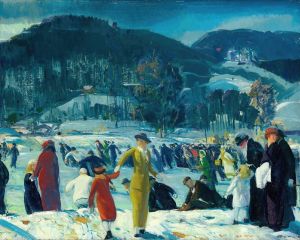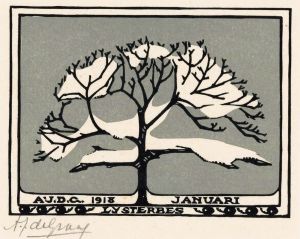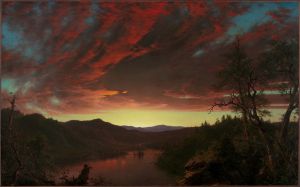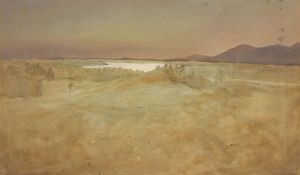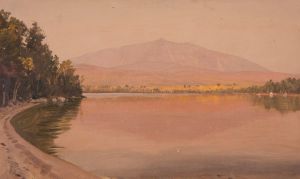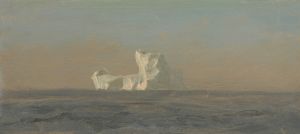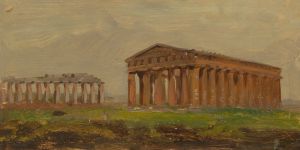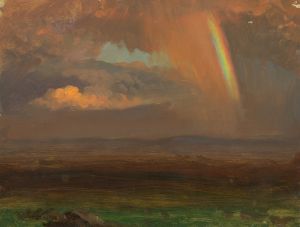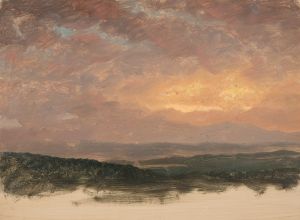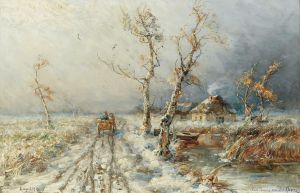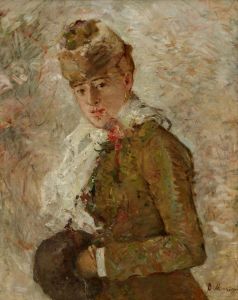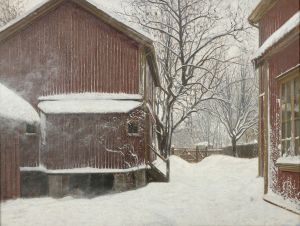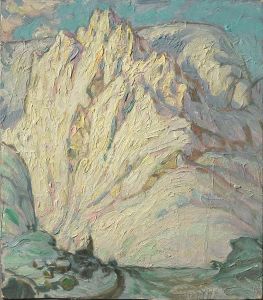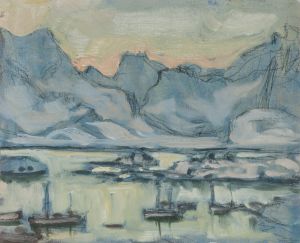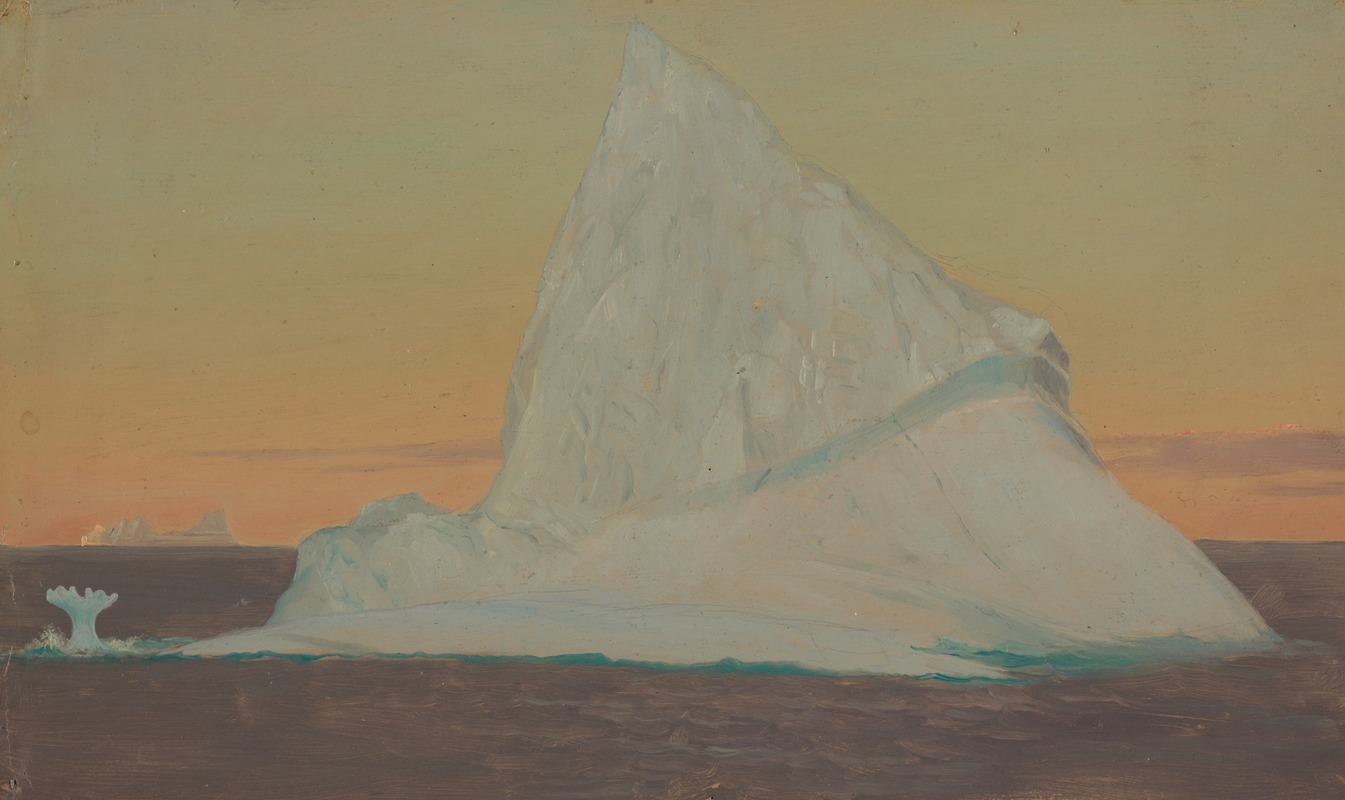
Iceberg and Ice Flower
A hand-painted replica of Frederic Edwin Church’s masterpiece Iceberg and Ice Flower, meticulously crafted by professional artists to capture the true essence of the original. Each piece is created with museum-quality canvas and rare mineral pigments, carefully painted by experienced artists with delicate brushstrokes and rich, layered colors to perfectly recreate the texture of the original artwork. Unlike machine-printed reproductions, this hand-painted version brings the painting to life, infused with the artist’s emotions and skill in every stroke. Whether for personal collection or home decoration, it instantly elevates the artistic atmosphere of any space.
Frederic Edwin Church, a prominent figure in the Hudson River School of American landscape painting, is renowned for his grand and detailed depictions of natural scenes. One of his lesser-known works, "Iceberg and Ice Flower," reflects his fascination with the sublime beauty of the natural world, particularly the icy landscapes of the Arctic.
Church's interest in Arctic scenes was significantly influenced by his 1859 voyage to the North Atlantic, where he encountered icebergs firsthand. This journey was inspired by the expeditions of explorers like Sir John Franklin, whose ill-fated search for the Northwest Passage captured the public imagination. Church's Arctic paintings, including "Iceberg and Ice Flower," are a testament to his desire to capture the awe-inspiring and often harsh beauty of these remote regions.
"Iceberg and Ice Flower" is characterized by its meticulous attention to detail and dramatic use of light and shadow, hallmarks of Church's style. The painting depicts a massive iceberg, rendered with a striking realism that conveys both its grandeur and its ephemeral nature. The "ice flower," a term that can refer to the delicate frost formations on the surface of the ice, adds an element of intricate beauty to the composition. Church's ability to depict the subtle interplay of light on ice and water demonstrates his technical skill and deep appreciation for the natural world.
The painting reflects the 19th-century Romantic fascination with the sublime, a concept that emphasizes the power and majesty of nature, often evoking a sense of awe and wonder. Church's work captures this sentiment, inviting viewers to contemplate the vastness and mystery of the Arctic landscape. His paintings often served as a bridge between art and science, as they were informed by the latest geographical and geological knowledge of the time.
Frederic Edwin Church was known for his ability to convey the emotional impact of the landscapes he painted. In "Iceberg and Ice Flower," he uses a palette of cool blues and whites to evoke the chill and isolation of the Arctic environment. The composition is carefully balanced, with the iceberg dominating the scene while the ice flower provides a delicate counterpoint. This balance reflects Church's mastery of composition and his ability to create a sense of harmony within the natural chaos.
While "Iceberg and Ice Flower" may not be as widely recognized as some of Church's other works, such as "The Heart of the Andes" or "Niagara," it remains an important part of his oeuvre. The painting exemplifies Church's dedication to exploring and depicting the natural world in all its complexity and beauty. Through his art, Church invites viewers to appreciate the majesty of nature and to reflect on humanity's place within it.
In summary, "Iceberg and Ice Flower" by Frederic Edwin Church is a remarkable example of 19th-century American landscape painting, capturing the sublime beauty of the Arctic with precision and emotional depth. Church's work continues to inspire and captivate audiences, offering a window into the natural wonders of a world that remains largely untouched by human hands.





